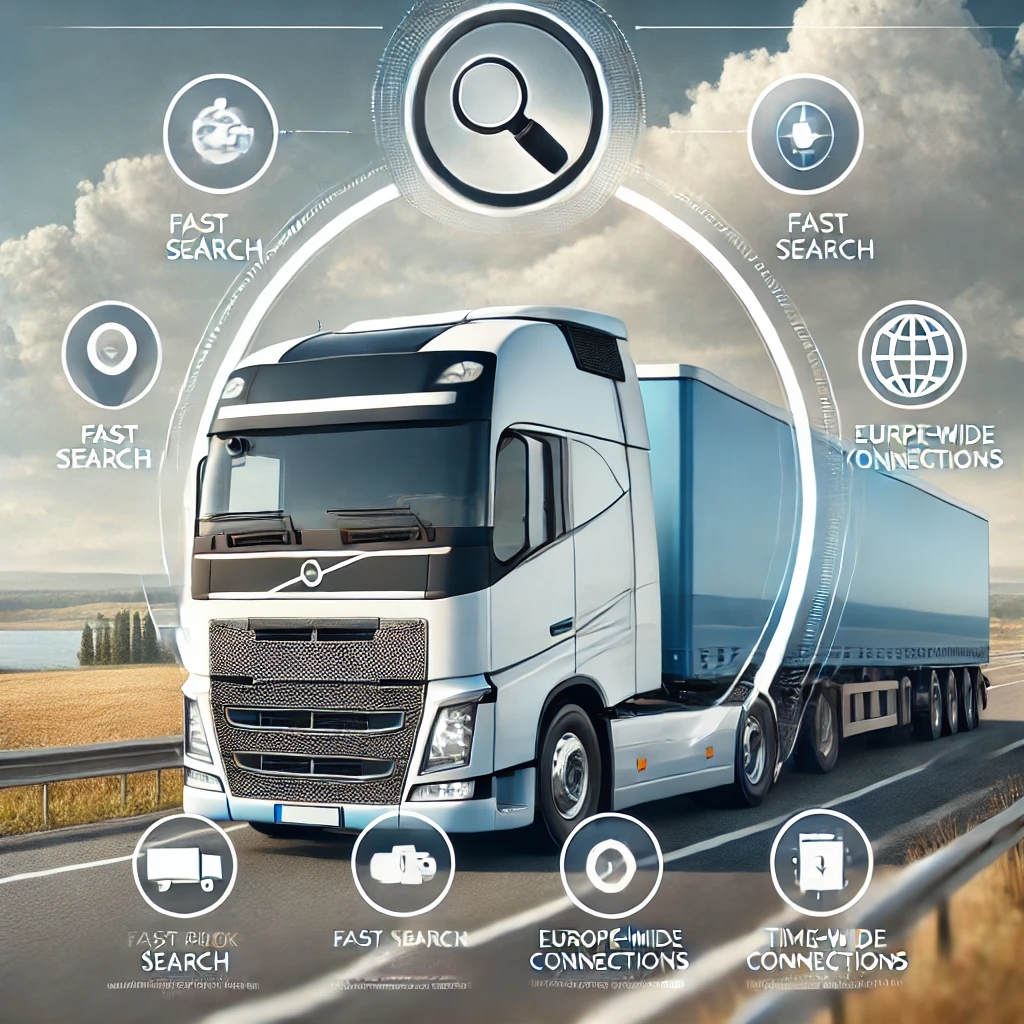
What is a Freight Exchange and How Does It Work?
A freight exchange is a digital platform that connects shippers (those who need to transport goods) with carriers (transport companies providing transportation services). The goal of the freight exchange is to quickly connect shippers with available transportation options and help carriers fill their vehicles, optimizing operations and costs for both parties.
How Does a Freight Exchange Work?
Freight exchanges work as an ad platform where shippers post details about the goods they need to transport – quantity, type, destination, and delivery date – and carriers list their available trucks and transport routes. Typically, the process involves the following steps:
- User Registration: Both shippers and carriers create accounts to access the platform.
- Posting Freight or Available Trucks: Shippers post details about their goods, while carriers list their routes and available trucks.
- Finding Partners: Shippers can quickly find carriers to meet their needs, and carriers can select freight that best fits their routes, thus avoiding empty runs.
- Negotiation: Many shippers and carriers communicate directly through the platform to agree on pricing and transport details.
- Confirmation and Transport Tracking: Once an agreement is reached, the transport is confirmed, and many platforms offer real-time tracking options so that the shipper knows where their goods are at any time.
Advantages of a Freight Exchange
For Shippers:
- Access to an Extensive Network of Carriers: Shippers can quickly find available carriers, saving time and resources.
- Cost Optimization: By comparing offers from multiple carriers, shippers can choose the most cost-effective option.
- Flexibility and Access to Different Vehicle Types: Shippers can find solutions for any type of goods, whether perishable, bulky, or hazardous.
For Carriers:
- Maximizing Vehicle Utilization: Carriers can find loads to avoid empty runs, thus optimizing their profit.
- Constant Access to Freight: Freight exchanges operate around the clock, offering carriers continuous access to new transport opportunities.
- Reducing Idle Time: Constant contact with shippers allows carriers to reduce waiting times between trips and plan routes more efficiently.
Types of Freight Exchanges
There are two main types of freight exchanges:
- Public Exchanges: Anyone can register and access these exchanges, and listings are visible to all users.
- Private Exchanges: Access is only permitted to specific users, such as members of certain organizations or specific transport networks. Private exchanges are usually used for special or high-value shipments.
How to Choose a Freight Exchange?
Choosing the right freight exchange for your business is essential for efficient and secure operations. Here are a few factors to consider:
- Platform Reputation and Security: A reputable freight exchange ensures a reliable experience and an extensive network of vetted partners.
- Available Features: A comprehensive platform should offer features such as transport tracking, carrier ratings, and support functions.
- Subscription Costs: Each platform has its subscription models – some offer free access to limited features, while others are available only via a paid subscription.
- User Interface and Technical Support: A user-friendly interface and prompt technical support can make a significant difference, especially for companies needing quick assistance in managing transport.
Conclusion
Freight exchanges have revolutionized the logistics industry, offering accessible and efficient solutions for both shippers and carriers. They are essential tools for any business that depends on freight transport, facilitating the processes of searching, negotiating, and confirming shipments quickly and transparently.
Whether you’re a shipper looking for fast transport or a carrier seeking loads, freight exchanges like European Cargo offer opportunities to increase efficiency and reduce costs through modern technology.

